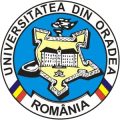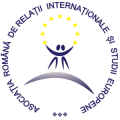The region is the economic unit of the global economy, the new growth center of the world. In this context, we can define regions not just as an ensemble of states, but as areas that represent development poles within different countries. Global economic development will inevitably lead to the withdrawal of the nation–state before the “region–state”, which has a main characteristic “the openness to the outside world,” the rest of the world being just a source of prosperity to it. We are therefore standing before an open economy where important economic decisions are made at a regional level.
One direction of the new regionalism involves new forms of governance at the urban level (metropolitan regionalism). The new micro–regional structures, which Ohmae calls “region–states”, fall in this perspective, being very competitive in the global market due to a combination of facilitator factors.
These regions represent centres of development for the states to which they belong to, engines that drive the economy of that country towards economic progress. Some regions coincide with the states themselves, while others represent development poles from the inside of a state or common areas of many countries.
Academic aims: knowledge of the regionalization and globalization processes; identification and classification of new regions according to their characteristics and variables
Learning objectives: the study of this discipline provides skills and competences specific to the specialist in regional development, searched on the employment market: the ability to understand and critically analyse the strategies and development policies applied by the region’s; the ability to identify the characteristics of a region; the ability to understand and measure the value and image of the regionally brand.
Course structure:
- Globalization versus regionalization
- Globalization and the economic frontiers
- The new regionalism
- Types of regions in nowadays world
- The region-state – characteristics and factors of growth
- The regional brand – tool for promotion and differentiation of the regions
- New regions inside and outside EU
Course support:
Bibliography
- Anderson, James, Liam O’Dowd, and Thomas Wilson. New Borders for a Changing Europe – Cross Border Cooperation and Governance. London: Frank Cass Publishing, 2003
- Anheier, H.K. and M. Juergensmeyer. Encyclopedia of Global Studies, Thousand Oaks: SAGE Publications, 2012. http://dx.doi.org/10.4135/9781452218557.n452
- Ashworth, Gregory, and Mihalis Kavaratzis. Towards Effective Place Brand Management. Branding European Cities and Regions. Cheltenham: Edward Elgar, 2010
- Breslin, Shaun, Christopher W. Hughes, Nicola Phillips, and Ben Rosamond New Regionalisms in the Global Political Economy. New York: Routledge, 2002
- Chase, Kerry A. Trading Blocs. States, Firms, and Regions in the World Economy. Michigan: The University of Michigan Press, 2005
- Dicken, Peter. Global Shift. Mapping the Changing Contours of the World Economy. New York: The Guilford Press, 2011
- Farrell, Mary, Björn Hettne and Luk Van Langenhove. Global Politics of Regionalism. Theory and Practice. London: Pluto Press, 2005
- Genov, Nikolai. Global Trends and Regional Development. New York: Routledge, 2012
- Gilpin, Robert. The Political Economy of International Relations. Princeton: Princeton University Press, 1987
- Gilpin, Robert. Global Political Economy. Understanding the International Economic Order. Princeton: Princeton University Press, 2001
- Hurrell, Andrew. „One World? Many Worlds? The Place of Regions in the Study of International Society”. International Affairs 83(1) (2007): 127-146
- Johnson, Debra, and Colin Turner. International Business: Themes and Issues in the Modern Global Economy. New York: Routledge, 2010
- Kotler, Philip, Donald H. Haider, and Irving Rein. Marketingul locurilor. București: Teora, 2001
- Krugman, Paul. „The Move Toward Free Trade Zones”. Economic Review, (1991):7-41. http://www.kansascityfed.org/PUBLICAT/EconRev/EconRevArchive/1991/4q91.pdf
- Ohmae, Kenichi. The Next Global Stage. Challenges and Opportunities in Our Borderless World.New Jersey: Wharton School Publishing, 2005
- Ritzer, George. Globalization: A Basic Text. Oxford: Wiley-Blackwell, 2009
- Snowdon, Brian, and George Stonehouse. „Competitiveness in a globalised world: Michael Porter on the microeconomic foundations of the competitiveness of nations, regions, and firms”. Journal of International Business Studies 37 (2006): 163–175. http://www.palgrave-journals.com/jibs/ journal/v37/n2/pdf/8400190a.pdf
- Speakman, J. and M. Koivisto. „Growth Poles: Raising Competitiveness and Deepening Regional Integration”. The Africa Competitiveness Report 2013: 93-106. http://www3.weforum.org/docs/WEF_Africa_Competitiveness_Repo rt_2013.pdf
- Strange, Susan. The Retreat of the State. The diffusion of power in the world economy. Cambridge: Cambridge University Press, 1996
- Şoproni, Luminiţa. Relaţii economice internaţionale. Oradea: Editura Universităţii din Oradea, 2004
- Van Ham, Peter. „Place Branding: The State of the Art”. The Annals of the American Academy. DOI: 10.1177/0002716207312274
- Harvard Business School – Institute for Strategy and Competitiveness, Clusters and Cluster Development. http://www.isc.hbs.edu/econ-clusters.htm
- The Place Brand Observer, http://placebrandobserver.com/





